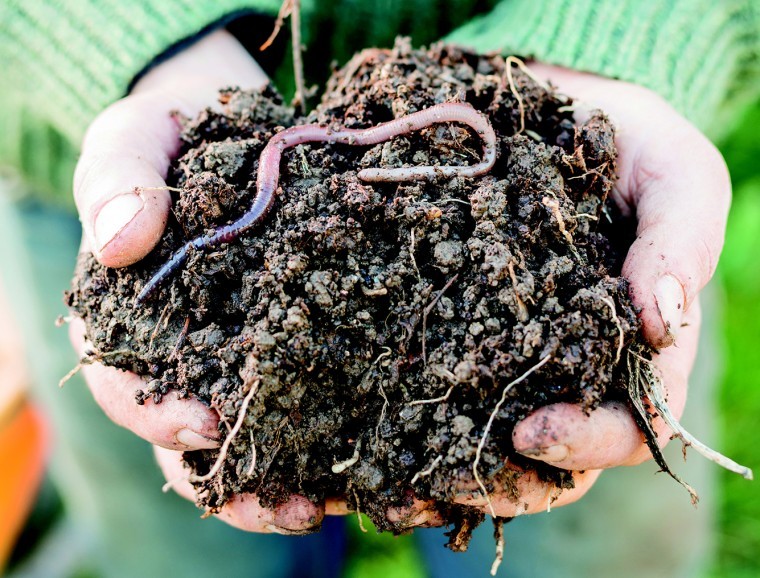Over eight years ago work at the Brampton centre for black-grass excellence explored the correlation between soil structure and management and weed control.
This work led the way for cultural methods of black-grass control that are now common practices on many of the UK’s arable farms bringing with it considerable crop performance benefits.
It is now widely accepted that good soil health is fundamental to agricultural productivity and sustainability, and in order to actively manage soil resources for optimum crop performance, it is vital to be able to measure and monitor soil health, and this is where our bespoke Healthy Soils assessment comes into play, explains Andy Hoyles, Hutchinsons nutritional development manager.
It’s also looking likely that Healthy Soils will be high on the government agenda as we head into an era of potential change to subsidies, and this will require some form of benchmarking, so growers should take the advantage of being one step ahead of the game and start an auditable trail now in order to demonstrate soil improvement measures.”
Larger farms, less labour and machinery that lets us work fields all year around, have resulted in a culture of increasing and unnecessary cultivations – all of which lends itself to poor soil structure and health, and to fix this growers really need to understand the science of what is happening in their soils, says Hutchinsons Healthy Soils expert, Dick Neale.
“This is the approach that we take with our Healthy Soils assessment which differentiates it from other similarly branded services–we get down into the nitty gritty of what is happening in the soils – its not about dragging a soil scanning machine with a quad bike over larger areas.”
- The Hutchinsons Healthy Soils audit is a hands-on trained specialist practical and scientific assessment (not standard sample) that provides an understanding of the soil baseline and aims to improve the soil throughout the rotation through a programmed approach.
- Cropping and cultivations review – crop rotations, cultivations, drainage. Key soil/field features picked up by aerial images.
- Vess test – visual evaluation of soil structure to 1m depth.
- Infiltration asessment – ability of water to permeate through soil profile indicating any issues with structure, capping etc.
- Soil Health & Texture test – sand, silt and clay composition, while soil health is assessed using techniques such as the Solvita C02 burst test.
- Key organisms and earthworm populations
- pH & macro and micro nutrients of total and available nutrients – 3 assessments at soil surface, 150mm and 300mm depths
{in-brief}
When should a Healthy Soils audit be carried out?
Dick Neale points out the importance of having a healthy assessment at the right time. “The key time to have soils tested is March – April, as this is when the soils are moist and biologically active, allowing for worm numbers to be measured etc.”
“If soils are tested post-harvest they are usually too dry, and not representative of their real status. Many worms are inactive then and also without a crop in the ground it’s not possible to see the impact of some roots.”
So how can this information help to improve yield potential?
A Healthy Soils audit looks at all of these components and using Hutchinsons precision agronomy software Omnia, links the information to yield potential. Based on the information gathered, Omnia analyses the local field data and information alongside regional information to calculate a theoretical potential yield that should be achievable.
Improved soil health brings benefits on heavy land farm
When Cambridgeshire farmers Adrian Abblitt and son Charles decided to move away from the traditional plough-based system to control resistant black-grass, they never fully predicted the benefits it would have on soil health across the 445ha (1,100-acre) family farm.
Earthworm populations are noticeably higher and the heavy Hanslope series clay at Grange Farm near Sawtry is much better structured, which is improving natural drainage and allowing timelier field operations in autumn and spring.
“Soil is a lot firmer, without being compacted, so tractors aren’t sinking in to the depth of the plough as before. We get a better tilth, can drill around a month later than we used to in the autumn for black-grass control and can travel on land earlier in the spring,” says Adrian.
It was a visit to the National Black Grass Centre of Excellence at Brampton in 2009 that inspired Mr Abblitt’s decision to use shallow tillage to control RRR-resistant black-grass, and working with Hutchinsons agronomist Simon Wilcox he has fine-tuned the system to benefit weed control and soil health.
Mr Ablitt now uses a 4m Cousins Surface Pro cultivator, which is the main cultivation ahead of all crops and has so far performed excellently.
“It moves soil consistently to a 50mm depth, won’t ride up over the ground and the packer-roller reconsolidates soil well. This all helps stimulate black-grass germination ahead of drilling and keep weed and volunteer seeds, moisture and organic matter in the top layer.”
The good tilth and “table top-level” soil has knock-on benefits for crop establishment, slug control and improving the accuracy of subsequent fertiliser and spray applications.
Yields are benefitting too, with the rolling average wheat yield increasing slightly to 9.5t/ha and spring barley capable of 9-10t/ha.
Building organic matter
Surface organic matter retention has significantly enhanced earthworm activity and plant rooting, which in turn aids natural structuring to create a “honeycomb” effect through the profile and a more resilient soil, Mr Wilcox says.
Surface organic matter also acts as an insulation “blanket” in winter, allows soil to warm up quicker in spring, yet keeps it slightly cooler and aids moisture retention in summer, he adds.
Mr Abblitt pays close attention to residue management and has just purchased a new straw chopper for the Case combine to give a finer chop that speeds-up organic matter breakdown.




